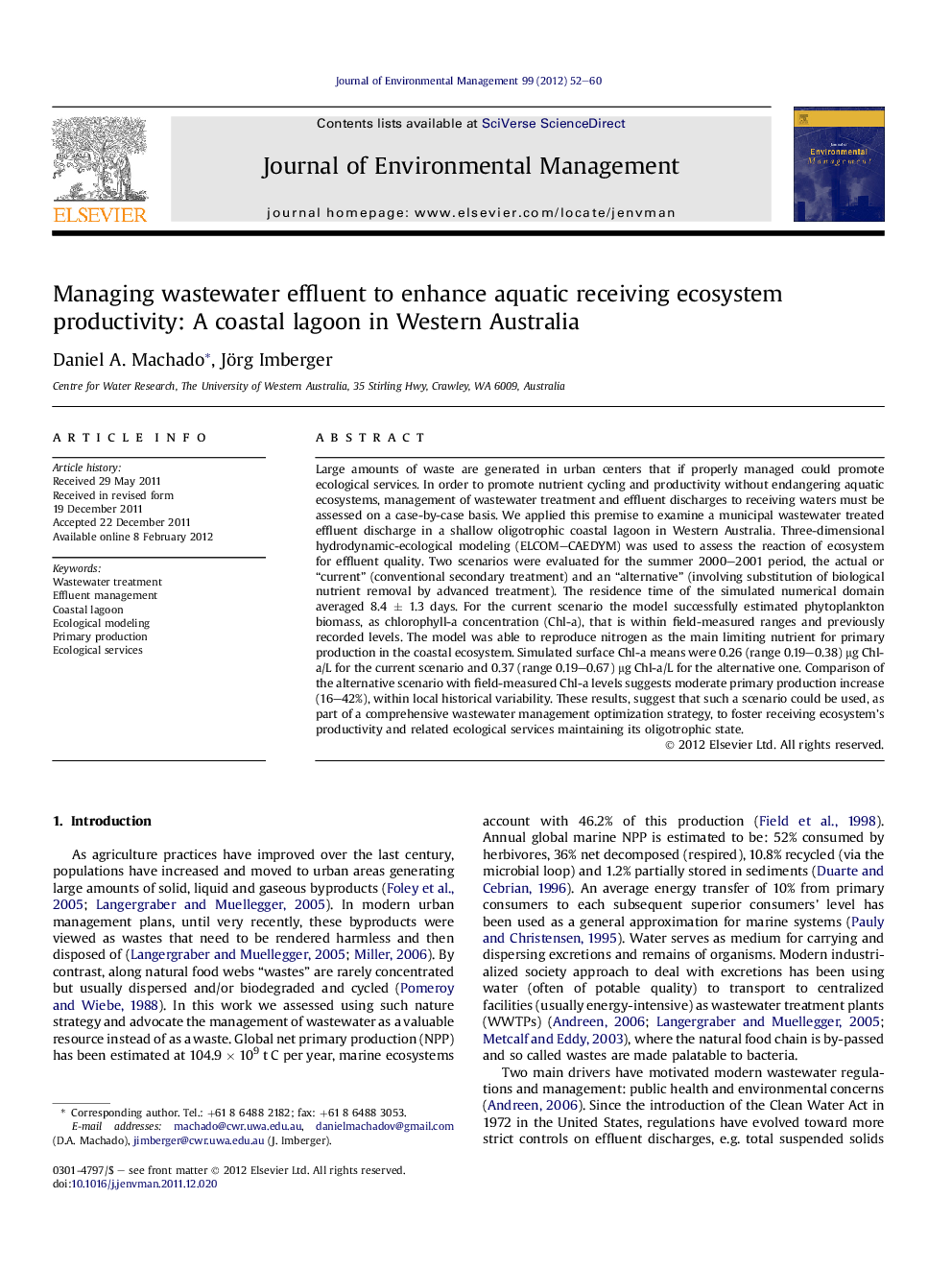| Article ID | Journal | Published Year | Pages | File Type |
|---|---|---|---|---|
| 1056904 | Journal of Environmental Management | 2012 | 9 Pages |
Large amounts of waste are generated in urban centers that if properly managed could promote ecological services. In order to promote nutrient cycling and productivity without endangering aquatic ecosystems, management of wastewater treatment and effluent discharges to receiving waters must be assessed on a case-by-case basis. We applied this premise to examine a municipal wastewater treated effluent discharge in a shallow oligotrophic coastal lagoon in Western Australia. Three-dimensional hydrodynamic-ecological modeling (ELCOM–CAEDYM) was used to assess the reaction of ecosystem for effluent quality. Two scenarios were evaluated for the summer 2000–2001 period, the actual or “current” (conventional secondary treatment) and an “alternative” (involving substitution of biological nutrient removal by advanced treatment). The residence time of the simulated numerical domain averaged 8.4 ± 1.3 days. For the current scenario the model successfully estimated phytoplankton biomass, as chlorophyll-a concentration (Chl-a), that is within field-measured ranges and previously recorded levels. The model was able to reproduce nitrogen as the main limiting nutrient for primary production in the coastal ecosystem. Simulated surface Chl-a means were 0.26 (range 0.19–0.38) μg Chl-a/L for the current scenario and 0.37 (range 0.19–0.67) μg Chl-a/L for the alternative one. Comparison of the alternative scenario with field-measured Chl-a levels suggests moderate primary production increase (16–42%), within local historical variability. These results, suggest that such a scenario could be used, as part of a comprehensive wastewater management optimization strategy, to foster receiving ecosystem's productivity and related ecological services maintaining its oligotrophic state.
► We modeled numerically a municipal wastewater effluent discharge in a coastal lagoon. ► We simulated the “current” treatment process and an “alternative” scenario. ► Modeled nutrient and chlorophyll-a for the current scenario agreed with field data. ► Higher nutrient levels in the alternative scenario fostered phytoplankton production. ► The models and approach shown are helpful in optimizing wastewater and effluent management.
